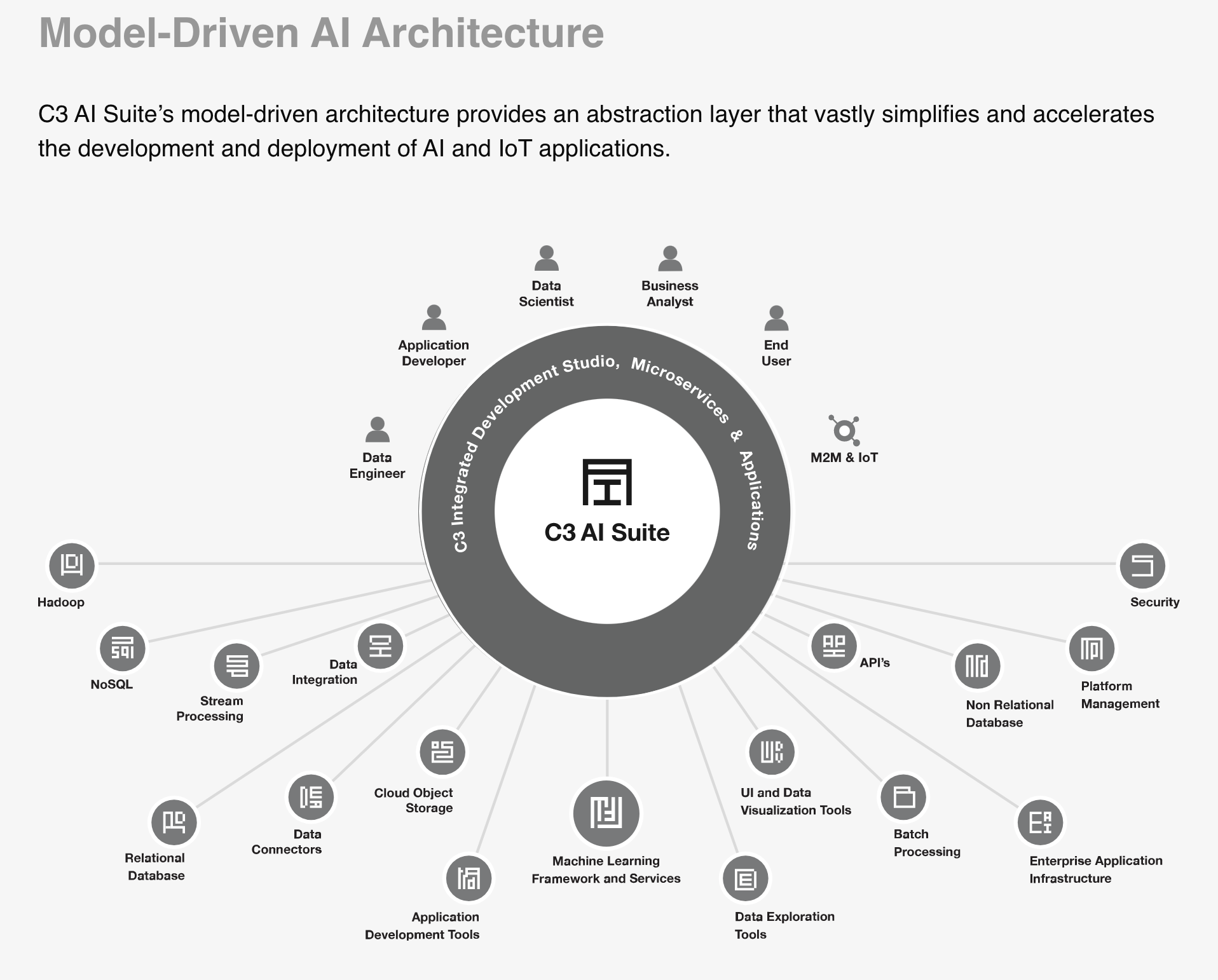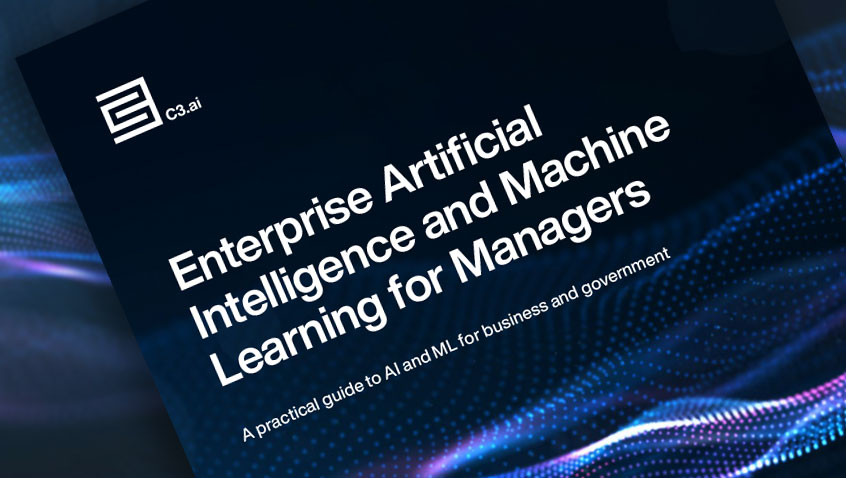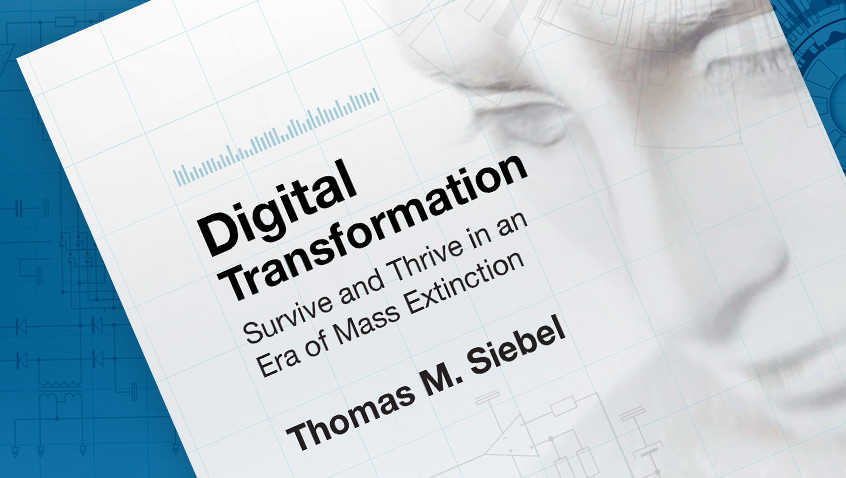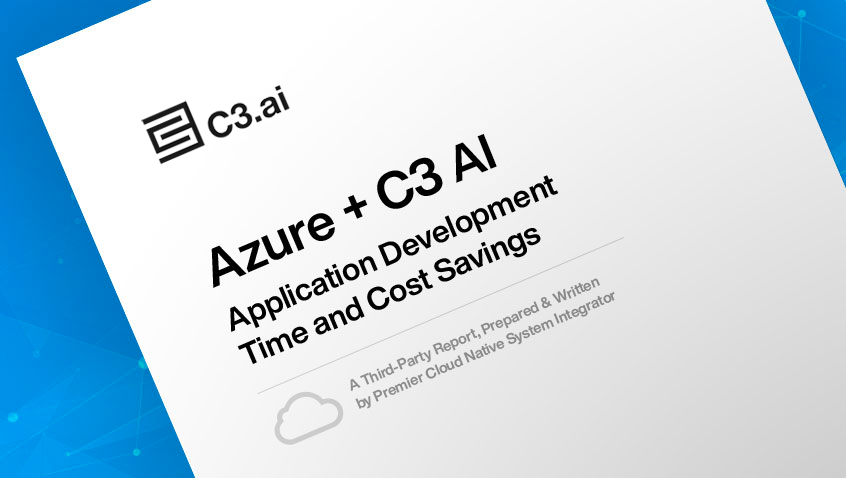- AI Software
- C3 AI Applications
- C3 AI Applications Overview
- C3 AI Anti-Money Laundering
- C3 AI Cash Management
- C3 AI Contested Logistics
- C3 AI CRM
- C3 AI Decision Advantage
- C3 AI Demand Forecasting
- C3 AI Energy Management
- C3 AI ESG
- C3 AI Health
- C3 AI Intelligence Analysis
- C3 AI Inventory Optimization
- C3 AI Process Optimization
- C3 AI Production Schedule Optimization
- C3 AI Property Appraisal
- C3 AI Readiness
- C3 AI Reliability
- C3 AI Smart Lending
- C3 AI Supply Network Risk
- C3 AI Turnaround Optimization
- C3 Generative AI Constituent Services
- C3 Law Enforcement
- C3 Agentic AI Platform
- C3 Generative AI
- Get Started with a C3 AI Pilot
- Industries
- Customers
- Events
- Resources
- Generative AI for Business
- Generative AI for Business
- C3 Generative AI: How Is It Unique?
- Reimagining the Enterprise with AI
- What To Consider When Using Generative AI
- Why Generative AI Is ‘Like the Internet Circa 1996’
- Can the Generative AI Hallucination Problem be Overcome?
- Transforming Healthcare Operations with Generative AI
- Data Avalanche to Strategic Advantage: Generative AI in Supply Chains
- Supply Chains for a Dangerous World: ‘Flexible, Resilient, Powered by AI’
- LLMs Pose Major Security Risks, Serving As ‘Attack Vectors’
- What Is Enterprise AI?
- Machine Learning
- Introduction
- What is Machine Learning?
- Tuning a Machine Learning Model
- Evaluating Model Performance
- Runtimes and Compute Requirements
- Selecting the Right AI/ML Problems
- Best Practices in Prototyping
- Best Practices in Ongoing Operations
- Building a Strong Team
- About the Author
- References
- Download eBook
- All Resources
- Publications
- Customer Viewpoints
- Blog
- Glossary
- Developer Portal
- Generative AI for Business
- News
- Company
- Contact Us
Glossary
- Artificial Intelligence
- AI Agents
- AI in Finance
- AI in Manufacturing
- Anomaly Detection
- Anti-Money Laundering
- Asset Performance Management
- Asset Reliability
- Demand Forecasting
- Digital Disruption
- Digital Transformation
- Digital Twin
- Elastic Cloud Computing
- Energy Management
- Enterprise AI
- Enterprise AI Platform
- Ethical AI
- Inventory Planning
- IoT Platform
- Know Your Customer (KYC)
- Machine Vision (Computer Vision)
- Model-Driven Architecture
- Multi-Cloud
- No Code
- Predictive Analytics
- Predictive Maintenance
- Process Optimization
- Production Scheduling
- Stochastic Optimization
- Supply Chain Management
- Type System
- Data Unification & Management
- Machine Learning (A to L)
- Artificial General Intelligence
- Bias
- Canonical Schema
- Canonical Transform
- Classification
- Classifier
- Classifier Performance
- Clustering
- Coefficient of Discrimination, R-Squared (R2)
- Convolutional Neural Network (CNN)
- Correlation
- Data Cleansing
- Data Labels
- Data Lineage
- Deep Learning
- Dimensionality Reduction
- Explainable AI
- F1 Score
- False Positive Rate
- Feature Engineering
- Feedback Loop
- Field Validation
- Gaussian Mixture Model (GMM)
- Generalized Linear Models
- Gradient-Boosted Decision Trees (GBDT)
- Features
- Ground Truth
- Holdout Data
- Hyperparameters
- Information Leakage
- LIME: Local Interpretable Model-Agnostic Explanations
- Linear Regression
- Loss Function
- Low-Dimensional Representation
- Machine Learning (M to Z)
- Mean Absolute Error
- Mean Absolute Percent Error
- Machine Learning Pipeline
- Model Drift
- Model Prototyping
- Model Training
- Model Validation
- Normalization
- Overfitting
- Precision
- Problem Tractability
- Random Forest
- Recall
- Receiver Operating Characteristic (ROC) Curve
- Regression Performance
- Regularization
- Reinforcement Learning
- Reporting Bias
- Ridge Regression
- Root Mean Square Error (RMSE)
- Selection Bias
- Shapley Values
- Supervised Machine Learning
- Tree-Based Models
- Underfitting
- Unsupervised Machine Learning
- XGBoost
Model-Driven Architecture
What is a Model-Driven Architecture?
Model-driven architecture is an approach to the design of software systems that uses platform-independent models – rather than traditional structured programming – to serve as an abstraction layer to dramatically simplify the programming problem. Models are independent of the underlying infrastructure services provided by any particular cloud platform provider, whether AWS, Azure, IBM, or Google. Models automatically are translated to one or more cloud platform–specific implementations. This means the developer doesn’t need to worry about which underlying components the application will use or which cloud platform the application will run on.
Using models, the programmer or application developer does not have to be concerned with all the data types, data interconnections, and processes that act on the data associated with any given entity, such as customer, tractor, doctor, or fuel type. By simply addressing the model for any given entity – for instance, customer – all the underlying data, data interrelationships, pointers, APIs, connections, and processes associated with or used to manipulate those data are abstracted in the model itself. As a result, with a model-driven architecture, AI and IoT applications can be configured and deployed much faster than with alternative approaches.
Why is a Model-Driven Architecture Important?
The notion of a model-driven architecture was developed at the beginning of the 21st century in response to the growing complexity of enterprise application development requirements. A model-driven architecture simplifies and accelerates development because it enables software engineers to encode the business logic of their AI and IoT applications with only a fraction of the code required by traditional programming approaches. The resulting benefits are dramatic. Small teams of programmers and data scientists can develop production AI and IoT applications in as little as 10 weeks, with large-scale projects typically requiring 12 to 16 weeks from design and development to testing and live production deployment.
Another important capability of a model-driven architecture is that the applications developed on the platform are entirely future-proofed. Suppose, for example, that an organization developed all its applications initially using Oracle as the relational database and then later decided to switch to an alternate RDBMS. The only modification required is to change the link in the RDBMS meta-model to point to the new RDBMS. All the applications deployed previously using Oracle as the RDBMS will continue to run without modification after the replacement. This enables organizations to immediately and easily take advantage of new and improved product offerings as they become available.
How C3 AI Uniquely Delivers a Model-Driven Architecture
The C3 AI® Platform – as well as applications developed on that platform, including prebuilt C3 AI applications – is designed and built with a model-driven architecture. Because of this model-driven architecture, anything can be represented as a model – even, for example, applications, including databases, natural language processing engines, and image recognition systems. Models also support a concept called inheritance. An AI application built with the C3 AI Platform might include a model called relational database, that in turn serves as a placeholder that might incorporate any relational database system, including Oracle, Postgres, Aurora, Spanner, or SQL Server. A key-value store model might contain Cassandra, HBase, Cosmos DB, or DynamoDB.

With its model-driven architecture, the C3 AI Platform provides an abstraction layer and semantics to represent the application. This frees the programmer from having to worry about data mapping, API syntax, and the mechanics of myriad computational processes like ETL, queuing, pipeline management, and encryption. The C3 AI Platform’s model-driven architecture reduces the number of entities, objects, and processes the developer must understand from an order of 1013 to 103. Freeing the developer from wrestling with all this minutiae accelerates the development of enterprise AI applications running on cloud infrastructures like AWS and Azure 25-fold and decreases the cost and complexity of designing, developing, testing, provisioning, maintaining, and operating an application 100 times or more.



